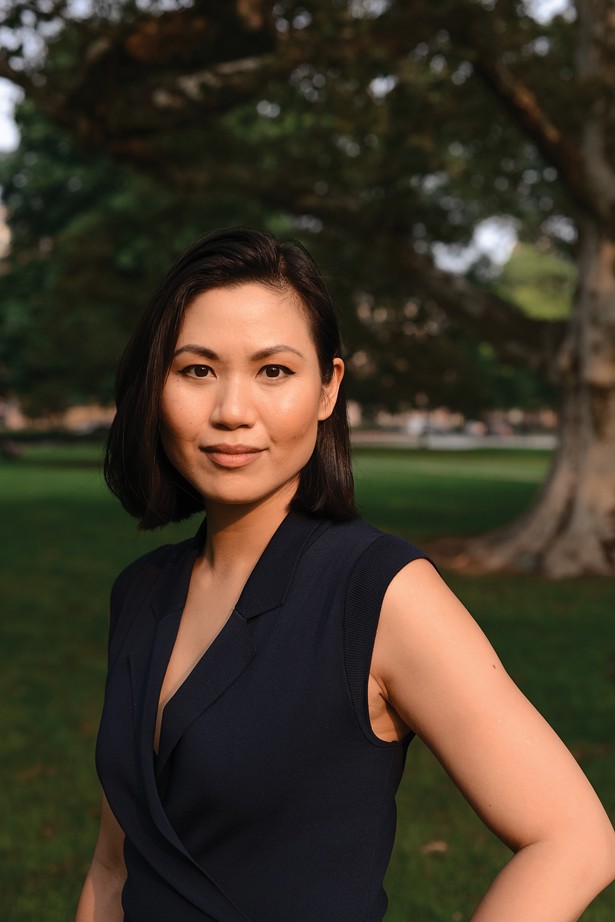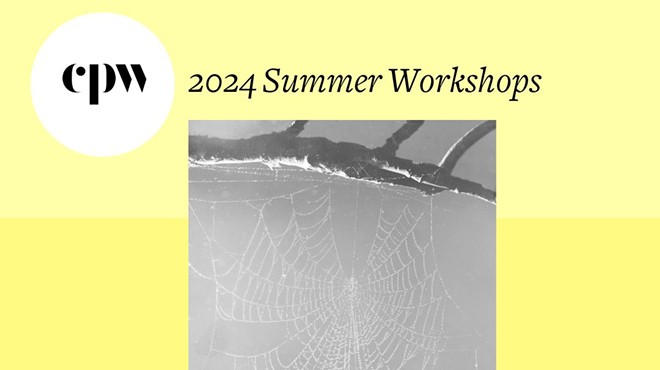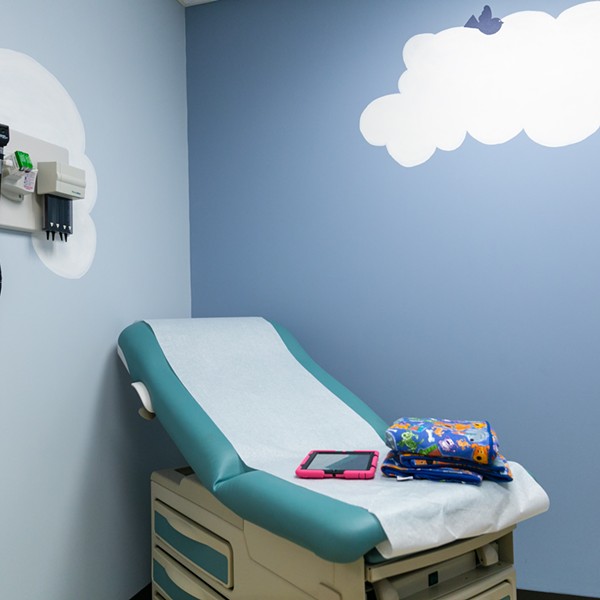We've come a long way since Rain Man," says Catherine Tan, PhD, referencing the 1988 film starring Dustin Hoffman as an autistic savant. For decades, this movie comprised most of the popular knowledge and imagination about autism. While the conversation has become more nuanced, there are groups who are working to expand the understanding of autism further.
Tan is an assistant professor of sociology at Vassar College and author of a new book, Spaces on the Spectrum: How Autism Movements Resist Experts and Create Knowledge (Columbia University Press, January 2024), but her interest in autism began during college with a part-time job babysitting for a young autistic child. In the book's introduction, she shares "being part of his and his parents' lives, I learned to appreciate the complicated relationship between autism and the non-autistic world."
According to her website, Tan "argues that science and health movements are important spaces for the cultivation and preservation of contentious knowledge—knowledge that aims to challenge dominant experts and authority. Such spaces organize the resources necessary to transform ideas into lived realities." This is autism research through the lens of medical sociology.
In the preface to her book, she is careful to show respect for the worlds she's been shown, acknowledging "I am writing this book as a neurotypical person," and expressing gratitude for the kindness of those she interviewed over more than three years of ethnographic research, appreciating the autistic people she interviewed, their parents, and practitioners alike, who trusted her enough to share their lived experience for her research.
The book investigates the beliefs of two groups deeply involved in expanding the popular and medical understanding of autism in the US, and leaves us knowing that better representation of people with autism spectrum disorder (ASD) is helping us to move toward a more inclusive, accepting society.
Tracking and Monitoring
ASD in the US wasn't carefully tracked until 2000, when the Centers for Disease Control set up the Autism and Developmental Disabilities Monitoring (ADDM) at 16 sites around the country to collect health and school records from eight-year-old children. Tracking and monitoring autism features has since been expanded to include four-year-olds, and half the sites also now monitor 16-year-olds.Incidences of autism have exploded since the ADDM began. According to their data, rates of autism in children were 1 in 150 in 2000 when they began monitoring, but by 2020 rates were 1 in 36. In addition, ADDM data shows that autism is four times more likely in boys, and 6.7 percent of those diagnosed with ASD have "profound autism," which includes 5.4 million adults in the United States.
Tan explains that some of this growth is due to deinstitutionalization, and to a lowering of the threshold for ASD diagnoses. Additionally, there is greater general awareness of ASD fueled by access to online information. Parents more easily notice when their children don't hit physical and emotional milestones, and when they don't, they seek answers.
Differing Approaches
For Spaces on the Spectrum, Tan focused her ethnographic research and interviews on two autism-focused movements—one group she calls the "alternative biomedical movement," which she describes as "a community of parents and practitioners who contend that autism spectrum disorder is caused by harmful environmental exposures—notably, early childhood vaccinations—and that there are worthwhile alternative or experimental treatments."The other group she identifies as the "autistic rights movement," which believes autism is a natural human variation, a neurodivergence, and not a disorder or something that needs to be "cured."
Although these two groups operate within disparate frameworks with ideologies that are, in many cases, in direct opposition, they have a few things in common: both groups represent autistic people and their needs, seek to gain legitimacy, and challenge the mainstream frameworks for autism. Tan uses these example groups to explore "knowledge-based resistances" that challenge the dominant autism paradigm.
"The two movements challenge the way autism spectrum disorder is understood by professionals, government, and even lay people," Tan says. "Both movements are speaking to the same fundamental issue: In our current American society, we don't have the infrastructure or the social safety nets to catch people when they need help."
Forced to the "Fringes"
While the 'alternative biomedical group' is led by parents and practitioners who hope to reverse autism through treatments that aren't scientifically accepted for autism treatment, the 'autistic rights group' believes autism and neurodivergence should be celebrated, and not medicalized as a disorder. This group seeks expanded civil rights, including more inclusivity and accommodation in a world designed for neurotypical people.While the biomedical group is primarily led by parents seeking experimental interventions, the autistic rights group is comprised mainly of adults with ASD advocating for themselves and others like them, asking politicians to protect and expand their rights.
Tan observes that both groups have positioned themselves in opposition to researchers, professionals, and parents outside their communities, and, in many ways, insulate themselves from scientific and medical authority. She contends that because neither group's needs are being met, they've moved themselves to the "fringes" in rejection of the mainstream narrative on autism. Further, she believes that both groups are fighting against a neoliberal capitalistic society that favors those without disability and leaves little recourse for those it's not designed for.
In Spaces on the Spectrum, Tan argues that if the US was better equipped to support people with disabilities, then neither group would be desperate to push against the mainstream, and sometimes, each other.
Social Cost of Disability
It's no wonder these groups are looking for equity and inclusion. Through data collected by the Census Bureau, the National Disability Institute reports that "people with disabilities are twice as likely to live in poverty than people without disabilities" and many struggle with job security. The US Bureau of Labor Statistics' final jobs report of 2023 reported that workers with disabilities feel 40 percent less secure in their jobs than people without disabilities, and are 75 percent more likely to have their job unexpectedly terminated. Because of concerns with job security—and a marked lack of sturdiness in the country's safety nets—people with disabilities are more at risk of becoming homeless.Tan notes that the people in each group draw hope from others making similar efforts, whether searching for cures, or advocacy and education. "For them to continue believing and holding onto this hope, they also have to be around other people doing the same thing," Dr. Tan says, which is where what she calls "contentious knowledge" plays a part.
Contentious Knowledge
Tan's research for Spaces on the Spectrum led to a 2021 article in Social Studies of Science titled "Defending 'snake oil': The preservation of contentious knowledge and practices." In this piece, she discusses the concept of contentious knowledge, which loosely translates into "challenging the mainstream."For example, within the biomedical group, many blame vaccines and other environmental factors for their child's autism even though, as Tan writes, "a link between vaccines and autism has been studied extensively and disproven definitively." She also observes that parents, in absence of information, can blame themselves, wondering if they have somehow inadvertently caused the autism.
"Parents don't start off doubting vaccines, they just want to know their kids will be okay," Tan says. Because parents in the "alternative biomedical group" believe ASD can be cured—and they want to give their child the best chance of success—they tend to try controversial therapies, even when they are a long shot. Examples include helminthic therapy (an experimental immunotherapy using parasites) and hyperbaric oxygen therapy (most well-known for treating decompression sickness and wound healing).
The American Academy of Pediatrics reports that 95 percent of kids with autism have tried complementary or alternative therapies, and that many parents don't share this with their pediatricians, a fact which is not surprising given that the organization officially warns against dismissing mainstream medical care in favor of alternative therapies.
The alternative biomedical community uses words like "recovery" and "cure." "If it's a physiological issue, it can be reversed, right?" Tan says. "It's hard to reverse something in the brain, but if you're thinking about it in terms of gut bacteria or inflammation, those things seem a lot more possible to treat." Additionally, most of them believe that the medical system is flawed, and they greatly admire unorthodoxy. "These parents aren't wedded to a potential ideology," Tan says. "They just want something that will work."
The Market for Hope
Hope is a common denominator for these two groups, and both groups agree that real change takes time. In Spaces on the Spectrum, Tan explains that "one of the trickiest parts of autism advocacy is determining who is best equipped to speak on behalf of those who have limited communication skills, cognitive disabilities, and intellectual disabilities." It's hard for these alternative groups not to be overshadowed by groups with bigger platforms and louder voices.
A Moving Target
Efforts on behalf of both the alternative biomedical and the autistic rights movements have grown, in part, because of the increase in autism diagnoses over the past 20 years. Research in that time period also shows autism exists on a spectrum, meaning it impacts more people, leading to a rise in awareness and activism. "Autism is something that people are not just becoming more aware of, but it is something that is becoming less stigmatized," Tan says. "And this is true not just for autistic people, but for all people and all disabled people as well. Representation is really important.""The change autism advocates are hoping for and working toward will require everyone to work together. The full spectrum needs to be represented. This includes the full spectrum of the disorder and also the full spectrum of how to approach autism, from the parents looking for a miracle "cure", to the adults pushing for dimmer lighting and softer music in more restaurants and shops. Parents know that sort of activism, and that sort of social change, takes a long time," Tan says. "And they accept that they might not get in their lifetime, their child may not see it in their lifetime."
"It's going to require a collaborative effort to represent the full spectrum and its needs fully," Tan says. "Reform takes time."
Spaces on the Spectrum: How Autism Movements Resist Experts and Create Knowledge
By Catherine Tan, PhD
Columbia University Press















